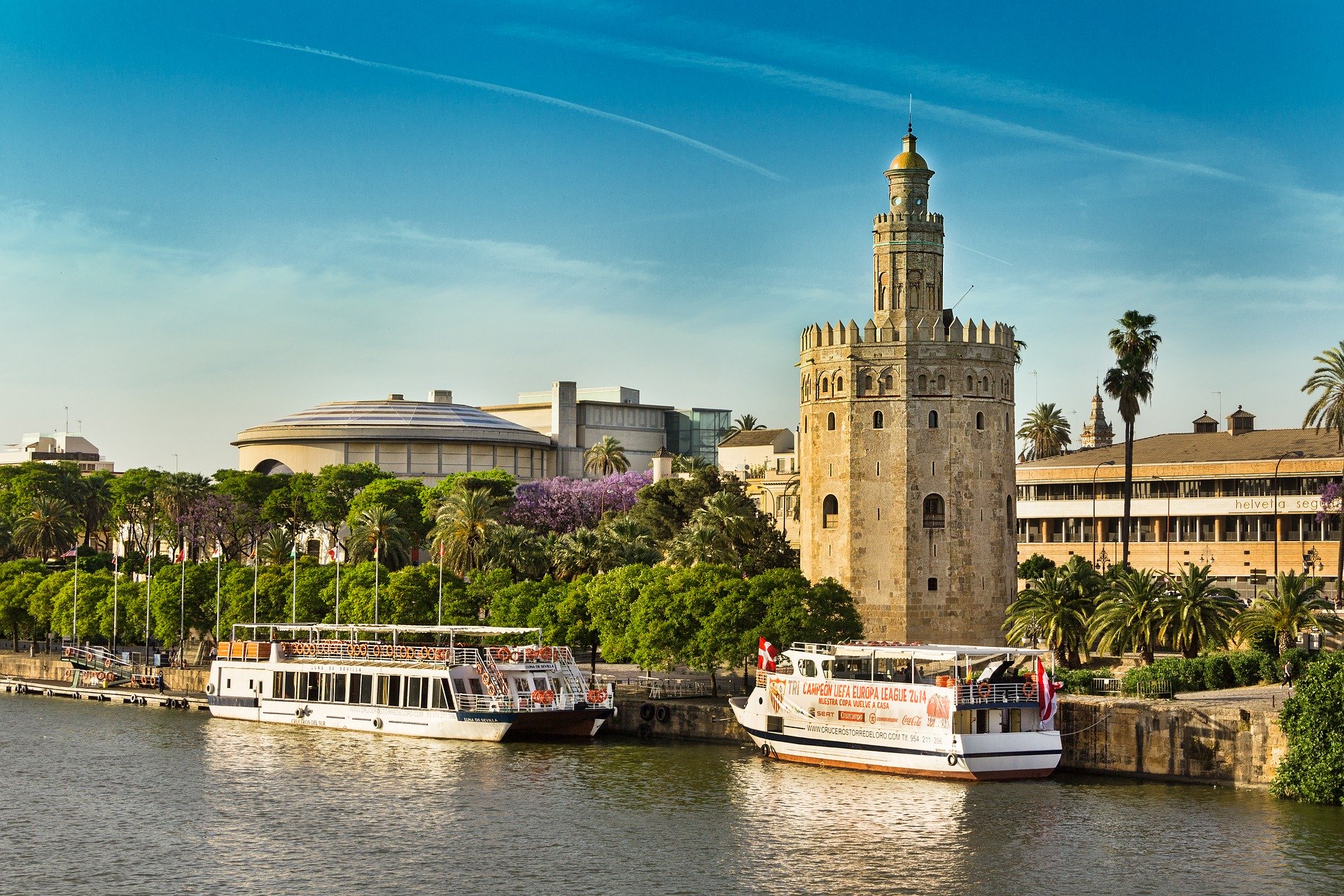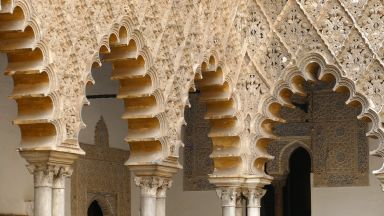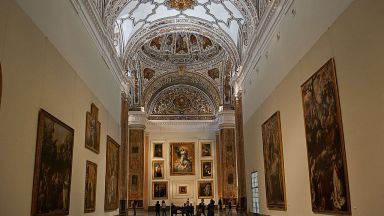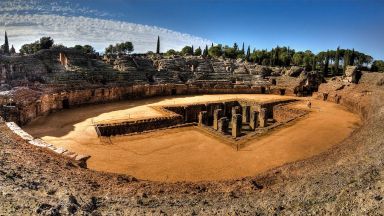16 Best Things to Do in Seville, Spain
This website uses affiliate links which earn a small commission at no additional cost to you.
Along with Córdoba and Granada, Seville is one of the three most famous cities in Andalucia.
Seville allows you to discover a City with a very rich Moorish architectural and historical legacy. As can be seen from the colorful painted tiles that adorn many buildings, to the stucco ceilings of the palaces and of course the iconic Giralda tower, which was once a minaret. It also allows you to dive into Spanish culture, with tapas, sangria and flamenco.
1. Seville Cathedral
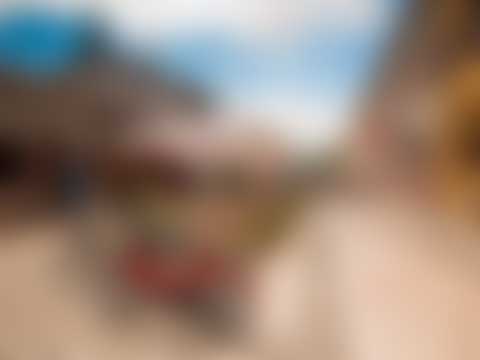
This golden cathedral is the result of a fifteenth-century plan by Sevillanos to build a church so big that everyone would ‘think they were mad’. It is an enormous structure and you feel like you will loose yourself within it. You could spend hours staring at the beautiful architectural details, relics and historical curios. This World Heritage site has 80 different chapels inside and is one of the world’s largest cathedral. The tomb of Christopher Columbus is a big draw as well as experiencing the peace and tranquility of the Patio of the Orange Trees.
Location: Av. de la Constitución, s/n 41004 Sevilla Spain | Hours: Tue-Sat: 11am-3.30pm Mon, to 5pm, Sun: 2.30-6pmJuly and August Monday from 10:30 a.m. to 4:00 p.m. (box office until 3:30 p.m.) From Tuesday to Saturday from 10:30 a.m. to 6:00 p.m. (box office until 5:00 p.m.) Sundays from 2:00 p.m. to 7:00 p.m. * (box office until 6:00 p.m.) | Price: 10€ (Does not include an audio guide, the price being € 4 if requested) | Website
Read more about Seville Cathedral
2. El Giralda

Next door to the Cathedral is the Giralda bell tower. It has been the enduring emblem for Seville despite its Moorish origins, being the minaret for the former mosque. To get to the top you have to go up 34 ramps lead to the top instead of a stairway – this was allow Muezzin who led the call to prayer to ride almost all the way to the top. On the way up there are regular archaeological exhibits, which break up the climb. At the top you have amazing views of the city and the buttresses of the cathedral.
Location: La Giralda Av. de la Constitución, s/n 41004 Sevilla Spain | Hours: Monday: 11:00 to 15:30 (16:30 to 18:00 free audioguide when reserved in advance) Tuesday to Saturday: 11:00 to 17:00 Sunday: 14:30 to 18:00 | Price: €10 / €5 | Website
Read more about El Giralda
3. Royal Alcázar Palace

The Palace is a beautiful medieval Islamic palace showcasing a unique fusion of Spanish Christian and Moorish architecture. This is forms part of the UNESCO-listed World Heritage site, together with the adjoining Seville Cathedral and the General Archive of the Indies. The palace complex is still in use by the Spanish royal family: their chambers, state rooms and halls are on the upper level and can be viewed if you pay a little extra.
The gardens of the Real Alcazar served as the setting for the Kingdom of Dorne on the Game of Thrones. If you enjoy Moorish architecture and decoration, this place will be a real treat for you.
Location: Patio de Banderas, s/n 41004 Sevilla Spain | Hours: From October to March: 9.30 am – 5 pm From April to September: 9.30 am – 7 pm Closed: January 1st and 6th, Good Friday and on December 25th | Price: €11.50 | Website
Read more about Royal Alcázar Palace
4. Plaza de España

The Plaza de España was built for the Ibero-American Exposition in 1929 and is situated within the Maria Luisa Park. Seville’s famous Plaza de España monument was built for the Ibero-American Exhibition of 1929, which was held in the Andalusian capital. Located in María Luisa Park, it was the centerpiece of the exhibition and featured many pavilions, which aspired to show off to the world Spain’s accomplishments in industry and architecture.It’s a semi-circular plaza edged by a canal and overlooked by a large, curved palace. It is a magnificent sight and a must see, with its colored ceramics and 48 tiled alcoves, each representing a different province of Spain.
Location: Plaza de España, s/n. 41013 Seville | Hours: 24 Hour | Price: Free | Website
Read more about Plaza de España, Seville
5. Maria Luisa Park

Maria Luisa is the largest green space in central Seville and is a delightful oasis of green, and is ideally located to escape the noise of the city, with ornamental duck ponds, tiled fountains, and shady paths snaking under the trees. The park’s has broad avenues flanked by palm trees.
In the late-19th century the grounds for this park were donated to the city by Infanta Luisa Fernanda, originally it belonged to the nearby San Telmo Palace, which dates back to the 1500s. The park took its present shape after development in 1911.
Location: Paseo de las Delicias, s/n 41013 Sevilla Spain | Hours: Nov 01 to Mar 31: 8:00 AM to 10:00 PM Apr 01 to Oct 31: 8:00 AM to 12:00 AM | Price: Free | Website
Read more about Parque de María Luisa
6. Right Bank of the Guadalquivir

Starting from the Isabel Bridge you walk alongside the river towards the University of Seville.
Most sunny days Seville’s residents will be here out for walks, riding bikes, jogging or sitting on the stone walls looking across the water to Triana.
You pass by the Plaza de Toros, the 250-year-old bullfighting arena and its museum, which is an interesting visit.
If you continue further along the river you will find the Torre del Oro, an ornate watchtower erected during the days of the Almohad Caliphate in the 13th century, which now also houses the maritime museum.
From the bank you have good views across the river at the Bario de Triana.
Location: Paseo Cristobal Colón, s/n 41001 Sevilla. | Hours: Monday - Friday: 9:30 AM to 6:45 PM Weekend: 10:30 AM to 6:45 PM | Price: €3 | Website
Read more about Torre del Oro
7. Tablaos and Flamenco Shows

Throughout the year there is flamenco happening each evening in Seville.
The Museo del Baile Flamenco provides the history of flamenco, with a live show and even lessons all set within an 18th-century building.
There are also plenty of tablaos to find in Seville. A tablao is the place where flamenco shows are performed, and is a great way to experience a show, with live musicians and either a bar or restaurant service.
If you are in Seville in the spring or autumn you can watch the Peñas de Guardia, which showcase local or up-and-coming flamenco talent.
Location: Museo del Baile Flamenco, Calle Manuel Rojas Marcos, 3 41004 Sevilla, Spain | Hours: Museum: 10am-7pm Flamenco show: 7pm - 8pm | Price: Museum: €10, Show: €20 adults | Website
Read more about Museo del Baile Flamenco
8. Archaeological Museum

The Archaeological Museum of Seville is housed in the Fine Arts Pavilion that was built for the 1929 Ibero-American Exposition in the Plaza de España, collecting the most important artifacts from the archaeological sites around the Seville Province.
The most exciting finds are from the Bronze Age: For example, dating to the 8th century BC is Treasure of El Carombolo. The El Carambolo treasure, was discovered near Seville in 1958 and contains of golden bracelets, a golden chain with pendant, buckles, belt- and forehead plates.
The museum also houses many of the finds from the Roman town of Italica.
Location: Archeological Museum of Seville Plaza América, 51 41013 Sevilla Spain | Hours: Sep-Jun: Tue-Sat: 9am-9pm Sun: 9am-3pmJul & Aug: Tue-Sun: 9am-3pm | Price: Free for European Union Citizens. Another countries: 1,50 €. | Website
Read more about Archeological Museum of Seville
9. Museum of Arts and Traditions

The Museum of Arts and Traditions of Seville is housed in the Mudéjar Pavilion which was also built for the 1929 Ibero-American Exposition.
The museum is dedicated to the ethnological heritage of Andalusia, both material and human. The objects and utensils on display document the customs and ways of life of the traditional culture in the area. There is an emphases in ceramics, clothing and craft activities but everyday items are included such as lace, ceramics, clothing, work tools, precious metalwork, musical instruments, etc. There is also a section on everyday clothing and costumes worn for the feria.
Location: Museum of Popular Arts and Traditions, Sevilla Plaza América, 3 41013 Sevilla Spain | Hours: Sep to Jun Tue-Sat - 9am - 8pm, Sun - 9am - 3pm, Jul to Aug Tue-Sun, 9am-3pm Closed Monda | Price: Free for EU Citizens. Another countries: 1,50€. | Website
Read more about Museo de Artes y Costumbres Populares
10. Museum of Fine Arts

Much of the work here has a religious theme and was acquired when monasteries and convents around the city that were closed down during la Desamortización from 1835 – 1837.
Location: Seville Museum of Fine Arts, Pl. del Museo, 9 41001 Sevilla Spain | Hours: 9am-9pm Tue-Sat, to 3pm Sun | Price: €1.50 | Website
Read more about Museo de Bellas Artes
11. Feria de Abril

To the south west of the center of Seville, in Los Remedios, the Feria de Abril takes place. This week long event, beginning a lighting ceremony and wrapping up with a massive firework display.
There are a thousand tents or casetas are erected, and locals go around in traditional costumes – the women will wear the “traje de gitano”, literally gypsy suit or flamenco dresses, while many men will wear the traje corto or short waistcoats and wide-brimmed hats. During the Fair people will eat, drink and dance traditional Sevillanas until dawn.
In the evening there is the fairground, with horseback rides and classic fair amusements.
Read more about Feria de Abril de Sevilla
12. Semana Santa

The Holy Week processions in Seville is very famous. From Palm Sunday to Easter Sunday somber penitents march through the streets wearing sandals, robes and those odd pointed hoods. The groups belong to brotherhoods of churches from across the city. They will carry the large, ornate floats portraying scenes from the Passion of Christ. This culminates of to Maundy Thursday, when the city’s central plazas have a seated area put up and attendee wear black. On this night the processions make their steady way around the city center until the morning.
| Hours: Mar/Apr | Website
Read more about Seville Semana Santa
13. Roman Ruins of Italica

Only 8km out of Seville lie the ruins of Italica the birthplace of Roman Emperors Trajan and Hadrian. Italica is a large archaeological site, with highlights being the amphitheater and the Roman Theater. The amphitheater could have sat 25,000 spectators in the day, and you can explore the tunnels beneath the terraces of the arena. On top of that is the foundations of mansions and temples and exquisite mosaics.
Location: Conjunto Arqueológico de Itálica, Av. Extremadura, 2 41970 Santiponce Sevilla Spain | Hours: Jan - Mar Tuesday to Saturday from 9am to 6pm, Sundays and holidays from 9am to 3pm Monday: ClosedApril - Jun Tuesday to Saturday from 9am to 8pm, Sundays and holidays from 9am to 3pm Monday: Closed. | Price: Free for EU citizens, and only €1,50 non EU | Website
Read more about Roman Ruins of Italica
14. Bario de Triana

Opposite the old city, on the left bank of the Guadalquivir, is the Triana neighborhood. It was formerly known as Seville’s gypsy neighborhood, Triana has evolved into a lively vibrant area packed with charming paved streets, ceramic shops, pretty churches, atmospheric tapas bars and flamenco scene.
Calle Betis is an excellent viewpoint to contemplate some of the most famous landmarks of Seville, the Torre del Oro and the splendid El Giraldillo.
Visit the recently modernized Triana Market, or explore the history of the area at the Museum of the Inquisitors nestled in the ruins of San Jorge Castle, or the slightly more mundane Ceramics Museum.
Read more about Triana
15. Setas de Sevilla

The Setas de Sevilla popularly known as the Mushrooms of the Incarnation is a huge wooden structure with plenty of terraces, restaurants, cafeterias and bars to enjoy Seville evening and night.
On the top of the building, there is a viewing point and walkway, which allows you to walk among the Seville skyline.
The basement contains A museum showing Roman ruins, including some amazing mosaics that were uncovered when excavations were being done.
Location: Plaza de la Encarnación, 41003 Seville, Andalucía, Spain | Hours: Sunday - Thursday: 9:30 AM to 11:00 PM Friday - Saturday: 9:30 AM to 11:30 PM | Price: €3 | Website
Read more about Metropol Parasol (Las Setas de Sevilla)
16. Casa de Pilatos

The magnificent Casa de Pilatos is a late 15th century Palace, officially known as the Royal Ducal House of Medinaceli, is one of the most intriguing buildings in Seville.
The building incorporates a wonderful mix of Mudéjar, Gothic and Renaissance decor, with some beautiful tilework and ceilings of interlaced beams with decorative insertions -its like a mini-Alcázar.
The palace features unique architecture supposedly based on Pontius Pilot’s estate, decor and even has a bust of Caligula.
The palace was a filming location for the 1960s film Lawrence of Arabia.
Location: Plaza de Pilatos,1, 41003 Sevilla, Spain | Hours: November to March: Mondays - Sundays 9:00 to 18:00 April to October: Mondays - Sundays 9:00 to 19:00 | Price: Ground floor: 6 € Ground and upper floors: 8 €. If you’re an EU citizen, show your ID card or Passport and you can access this palace for free on Monday, from 3 pm to 7 pm. | Website
Read more about Casa de Pilatos
Save this Guide for later!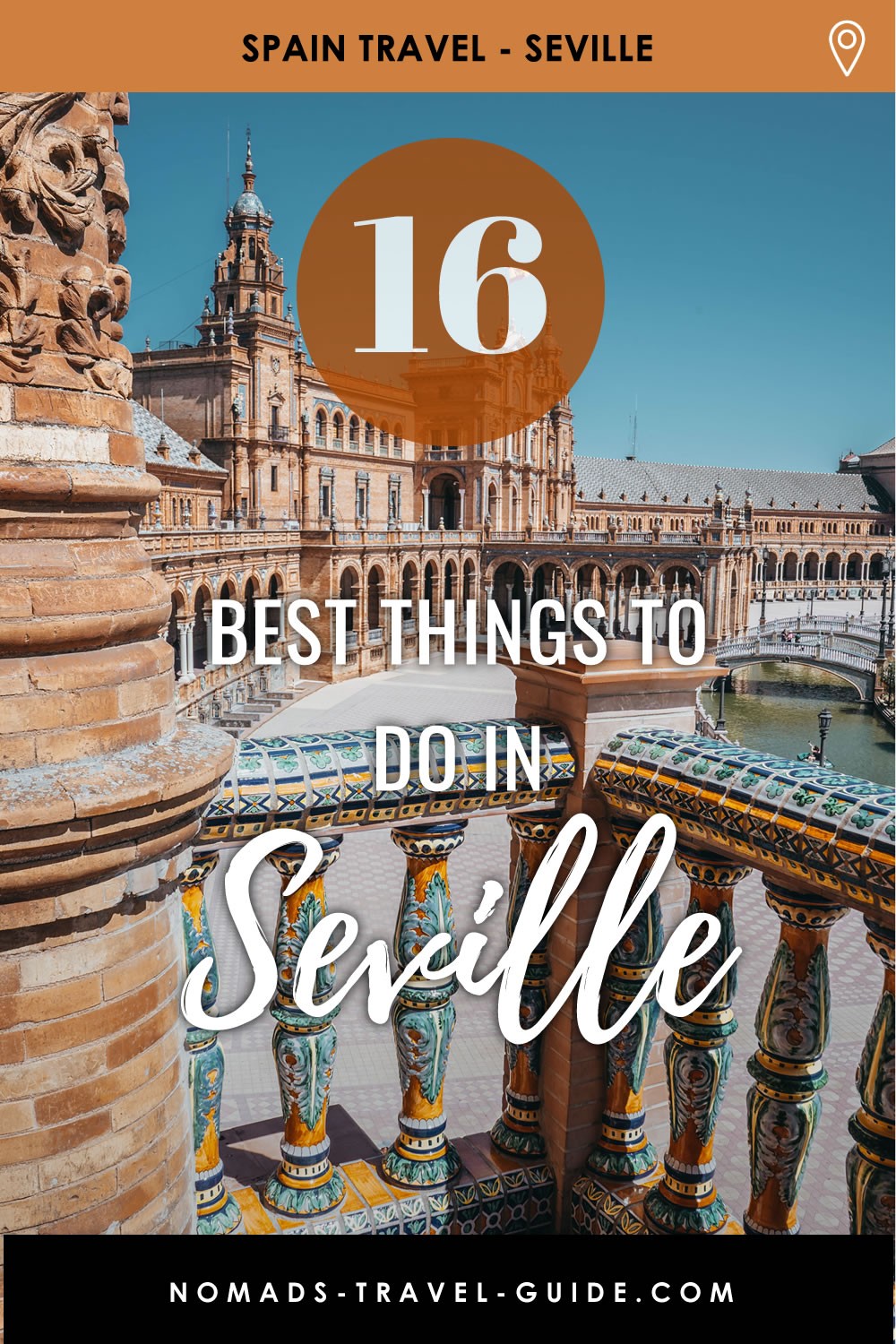

This website uses affiliate links which earn a small commission at no additional cost to you.
